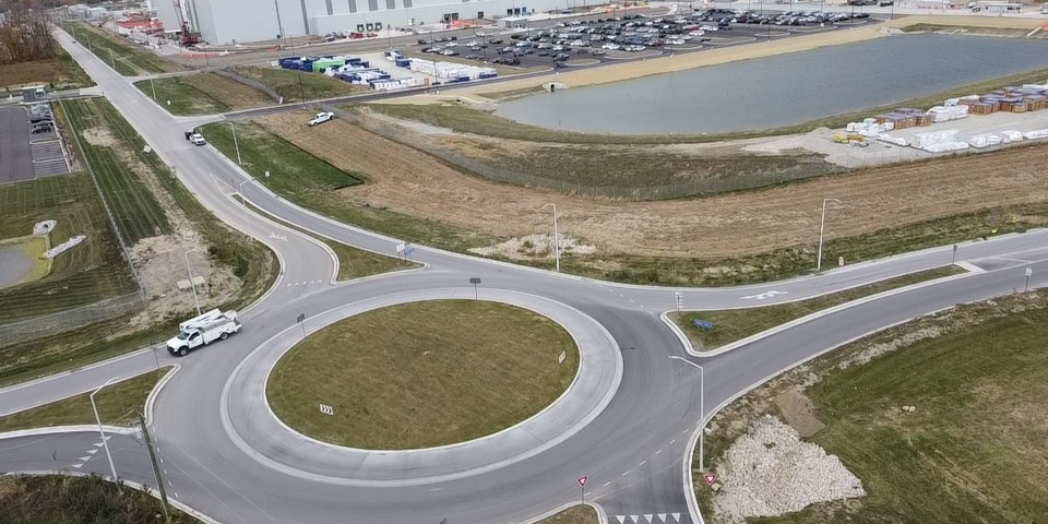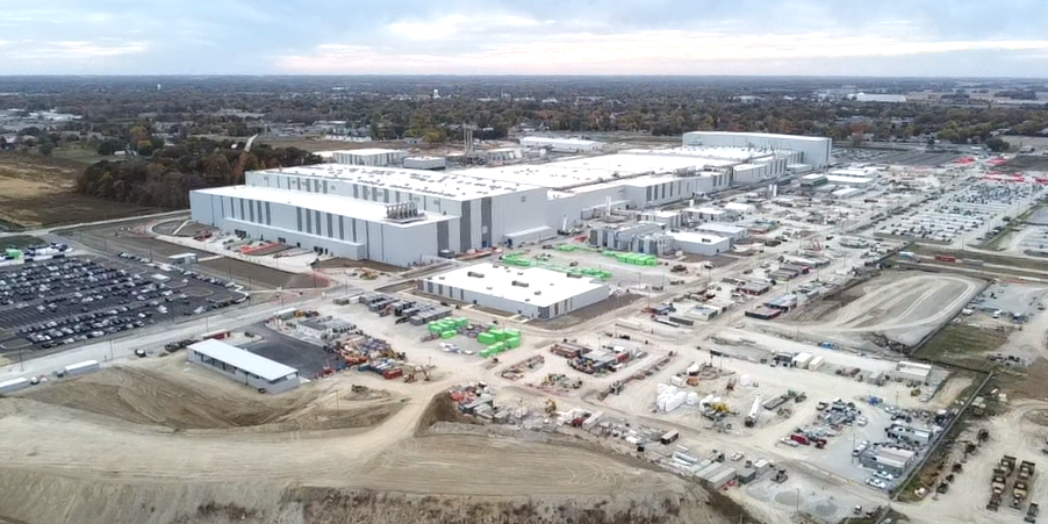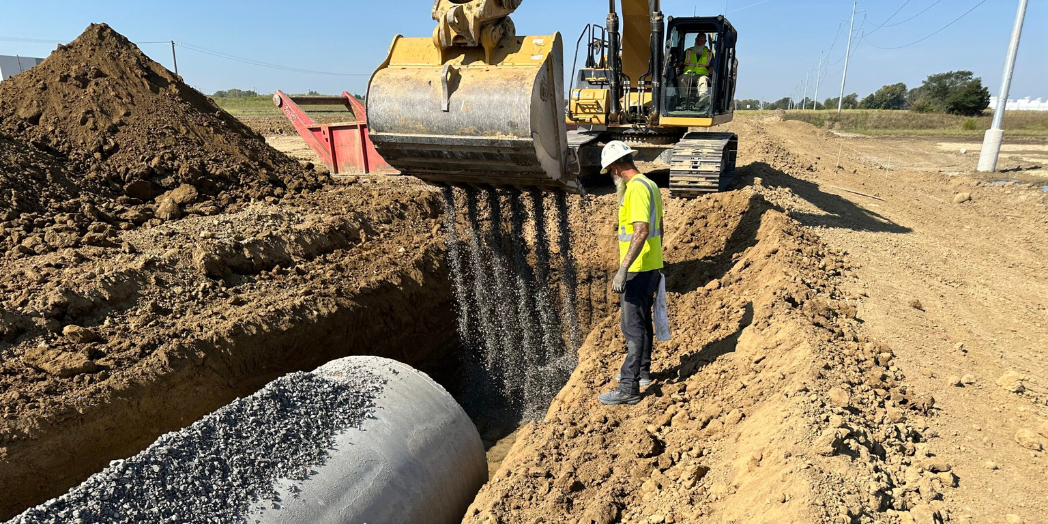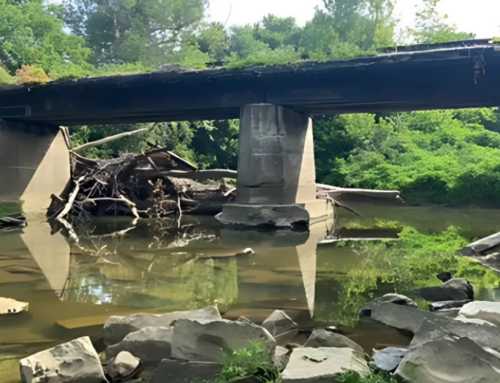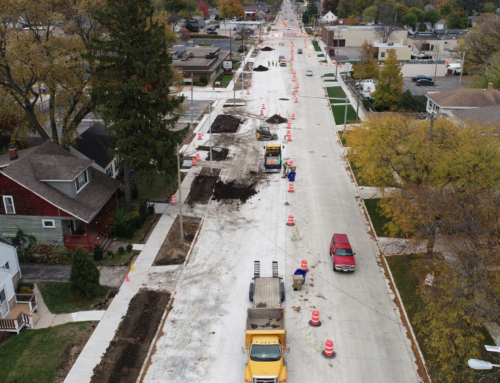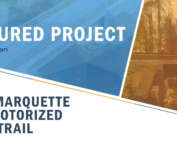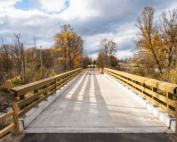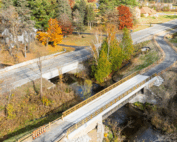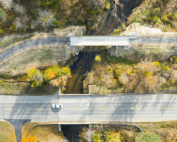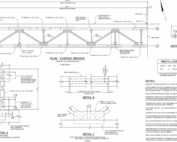Kokomo Stellantis EV Battery Plant – Stormwater & Road Improvements
CLIENT: City of Kokomo
In the heart of Indiana, the City of Kokomo is rewriting its story. Long known for its ties to the auto industry, Kokomo is now steering into the future with a major shift toward electric vehicles (EVs). A massive $6.3 billion investment by Stellantis and Samsung SDI is bringing two advanced EV battery plants to town—along with 2,800 new jobs and a chance to lead in clean energy production.
But before these plants could take shape, something critical had to happen—something most people never see. The land around the development needed to be prepared to handle all that growth, prevent flooding, and support the infrastructure for thousands of new workers and vehicles.
That’s where the Stormwater & Roadway Improvements Project (SRIP) came in.

Preparing the Ground for Growth
This wasn’t just about pouring concrete or laying pipes. The battery plants were going up on wide-open, undeveloped land. That meant everything—from roads to flood protection systems—had to be created from scratch.
The land posed real challenges:
-
It was flat, which made it hard for water to drain naturally.
-
The groundwater level was high, increasing the risk of flooding.
-
There weren’t existing roads or drainage systems nearby.
-
The design had to keep changing as the building site evolved.
Instead of coming up with a short-term fix, the team at Clark Dietz, who led the project, designed a forward-thinking stormwater system. They didn’t just plan for the plant—they created a solution that benefits the entire surrounding area.
Their design included regional detention basins that manage rainwater for seven square miles, even protecting areas in downtown Kokomo from flooding. It’s a smart system that keeps water under control during storms and helps make the whole city more resilient.
Nature Meets Infrastructure
SRIP isn’t just practical—it’s also sustainable. One of the most innovative pieces of the project was daylighting more than 2,000 feet of stormwater pipe. That means instead of keeping the water underground, engineers turned it into an open, natural channel.
This approach:
-
Slows water flow, giving it time to settle and filter
-
Improves water quality before it reaches local streams
-
Creates habitat for native plants and animals
It’s a great example of how infrastructure can work hand-in-hand with the environment—not against it.

Roads to Opportunity
With two battery plants on the horizon, the city knew it needed better ways for people and goods to move around. SRIP delivered 1.5 miles of new roadways and added two roundabouts, helping smooth traffic and improve access to the plants.
These upgrades don’t just benefit Stellantis and Samsung SDI—they’ll help everyone in the community get around more safely and efficiently.
A Bigger Picture
Kokomo’s infrastructure investment goes beyond just supporting a couple of new buildings. It plays a role in a national shift toward clean energy and reducing America’s reliance on foreign sources for critical technology.
The stormwater and roadway improvements helped pave the way for a project that could redefine U.S. energy independence. It’s a local project with a national impact.
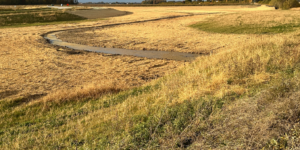
The Power of Planning
SRIP proves that with smart planning and thoughtful design, cities can grow responsibly. It shows how engineering, environment, and economic growth can come together to shape a better future—not just for Kokomo, but for the country.
And while the EV battery plants may get the headlines, it’s the stormwater basins, open channels, and new roads that made it all possible.
Kokomo isn’t just building electric batteries—it’s building a future powered by innovation and resilience.
More information can be found here.





